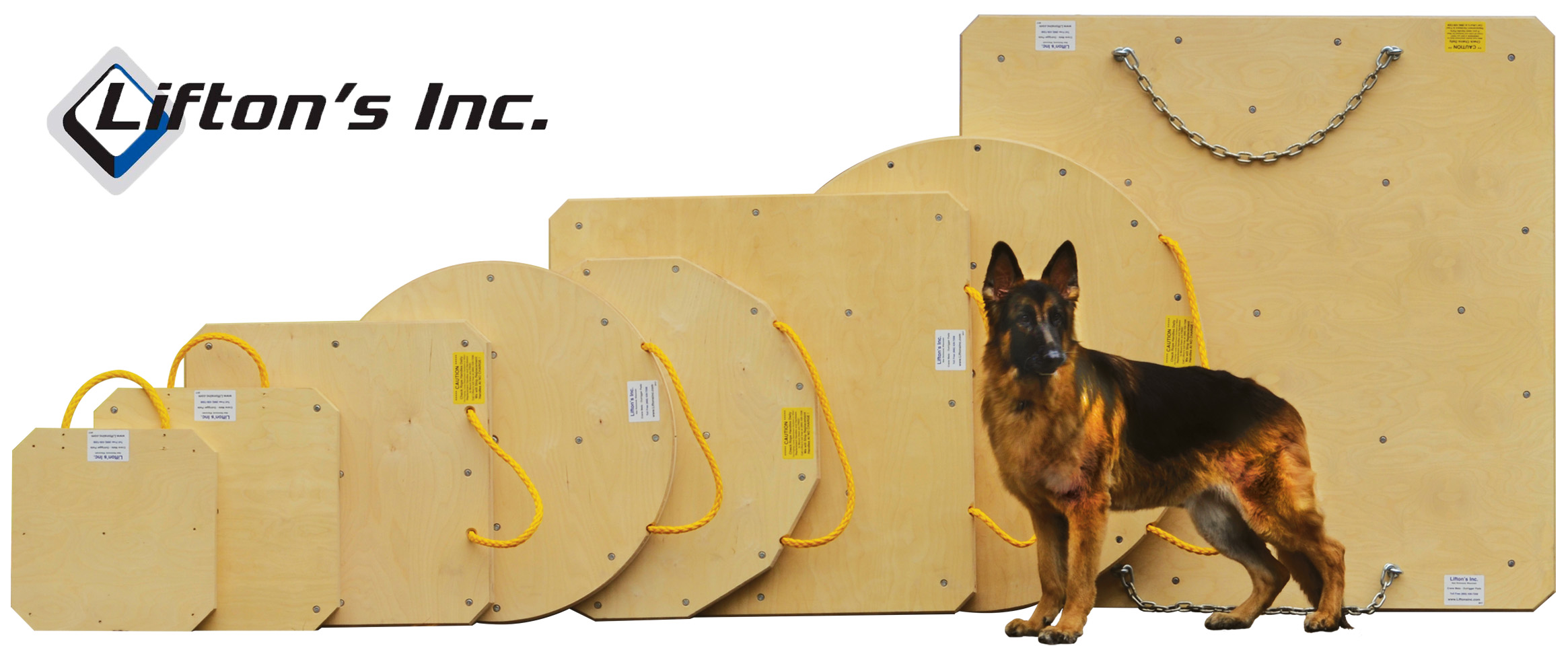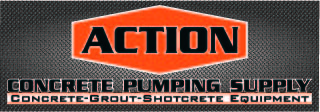| Todd | 07-22-2011 | comment profile send pm notify |
|
Here is the link to All Plugged up incase you want to read Chapter one http://www.concretepumping.com/dictionary/index.php/Main_Page But for those of you who want to read it here itis. I would like to thank Lee Horton for his hard work.
Plug on Prime
Without a doubt, the most common of all types of pump plugging. It has the potential to happen everyday, to any pump and every operator. The plug on prime is also the most common of all “operator error” pump problems. Why? Because plugging on prime is the direct result of loss of lubrication in a situation that almost 100% under the control of the operator. Occasionally the pump might malfunction during the critical 3-4 seconds that it takes to move material from the delivery cylinder to the tip hose or beyond. Even if that happens, its easily worked out if the operator has been taking care of business and the machine is able to be cycled manually.
The loss of material lube can come from a variety of sources. It can be from separation in a water prime if not done properly, from concrete that has been overdosed with “Super-P” and placed behind a thin primer, slick that has been watered down too much or not been allowed to gel, and whats the most criminal of all prime plugs, dirty boom pipe or ground system. I've been saying it for decades, what you did yesterday afternoon has more to do with today than right now...That's why I am an advocate of water washing and it can be done with any type of aggregates and sand as long as the material was able to be pumped, it can be water washed. The trick is in the technique. Poor technique and you may as well plan on a plugged boom. Question is, do you want it today or tomorrow morning? Pay me now or pay me later...doesn't matter.
Lets start with ground system and stand pipes & trailer pumps in general,. There will be lots of this stuff that does not apply to many grout pumpers, Olins, Maycos, Chem-grout and other slurry pumping applications so please keep in mind that most of this is about concrete mixes that contain aggregates. Although its very easy to plug up a slurry pump by priming with dirty system or simple laziness, its easier to screw up when there are rocks involved. I've also seen some well meaning dispatchers order some 5sk slurry prime to pump some 9sk grout....
Basics... that's where this battle begins. The key to many pumping issues as well as prime issues is and always will be loss of lubrication. I'm certain that many guys will get tired of hearing that term but it does explain most of the pump-ability problems and prime problems that we encounter. Learning what that means and applying it to the situation that you encounter will assist you in finding a quick resolution.
Priming is not actually what the word describes...pumps do not need to be primed. Pistons pumps need an energy source and that is about it. If that's available the pump is going to move and push or exert force on whatever is in front of the pump pistons. Lubrication enters at this point. If concrete lubricates itself, then it leaves something behind as it travels, Right? So, as the pistons push material thru the cylinder into the transition and into the system where the concrete must transform from sometimes a 8” or bigger material cylinder thru a reducing valve then into a transition piece and finally another reduction until it hits the delivery system size, this all requires extreme lubrication and ever increasing force to make all this happen. Again, as the material travels it leaves some lubrication behind, so the first “slug” of concrete is quickly becoming leaner and leaner until it can no longer lubricate itself. This doesn't take long either...it can happen within 3 ft of the hopper. Because of the need to change shape, accelerate, respond to pressure, reduce and swirl thru bends, the requirements for self-lubrication are very high at this point. Its also a very good place to find out if the material is going to be a problem before it gets 150' down the road where its much tougher to deal with a plug.
The term “priming” means to lubricate the system. It is the use of some form of compatible liquid to lubricate the pipe/hose walls so when the concrete enters there is nothing lost as the concrete travels thru the length of the system. The longer the system the more prime needed. The longer the system the richer the prime need be because it will leave a little behind as it travels and it is absolutely possible to plug on 9sk slurry if the distance is far enough or the grout starts out dry enough. My personal method of choice is to send some water ahead of grout so that the slurry can remain wet and useful longer and travel further. If its extreme line pumping 1000' or more, I'll apply CYA to the process and send water first, then gel followed by the richest grout available. If you want a long day...plug up 800' of 5” horizontal while priming.
Water Priming.... Many areas use plain water to shoot a 100 ft of 2 or 3” line on pea gravel or other small line jobs. There is some method to the madness. If the hose or line is a minimum of 3.5 times larger diameter than the largest aggregate, the concrete can be pumped easily and small line work is always richer by ratio than most large aggregate work so a good dose of water ahead of the concrete wets the system enough to let the richer than usual mix pass thru without much trouble. If the distance is greater, then gel can be used. The old days of 2&2 are about gone..2 bags sand and 2 bags cement on the first load. I'd bet that most people today haven't ever heard that term before...
Time consuming and the consistency of the slurry was poor at best, often made useless by too much water since there was rarely a good method of mixing beyond a stick and a bucket. Although having some cement in the water prime is better than none at all, it can be counter productive because the operator assumes that he can use more water since he has some cement in there...not true. If using a cement slurry it needs to be pasty and thick enough to coat the pipe much like paint has to cover a wall. Thin it too much and it doesn't cover well enough to do any good.
The “sin” in water prime on a pea rock pump (or any other) is usually in dirty system. Hoses that did not get washed, or get rolled out completely. It only takes a handful of non-lubricated material to plug a small line. Because pea rock is richer, its harder to plug up from the water causing a separation plug. Its almost always dirty system. The bad news in pea rock is that you only get one option should you blow the prime...since many small line pumps with ball valves or a stator do not have a reverse, its in the operators best interest to roll out his hoses each evening when loading to make sure they are clean. As the pump plugs, the operator must pay attention and be quick on the switch or he can easily blow a hose to pieces and/or jam a plug in a hose so hard that it has to be beat out and that is what will damage that hose and cause it to blow next week.....If your 2” was supposed to be hit with a 10 lb sledge hammer it would have a target painted on it.
An operators full attention is required when priming. If he hesitates as a plug appears he can make things lots worse by not being on the switch fast enough. What not to do when the water prime doesn't work? Never ever wind it up and hammer it. ALL that does is cause the system pressure to build up, then some poor soul has to go to the appropriate clamp with a shovel and try to flip the clamp open without being killed by the flying debris as the line flies apart under high pressure. There is no other way to relieve the pressure on many pea rock pumps other than popping open a clamp. THAT is why you decide on your prime wisely and exercise good judgment. If the mix and distance will tolerate a water prime, fine, its your call. Since gel is usually always available its a simple matter of risk assessment.
If the line does plug and does get opened without injury to anyone, the plug has to be found, completely removed, preferably washed out, then the system has to have some lube placed back in for the rest of the distance. Whatever is appropriate. Whatever is available. Time sensitive, use what you have instead of screwing around as the rest of the system sets up and the mud gets hotter. This is where your good judgment comes in.
Big line trailers are similar except that they DO have a reverse, but the improper use of reverse on a trailer can create as much havoc as not having it. How? Concrete is very heavy. One cubic foot can easily be 250lbs depending on the density of the rock and the quantities of rock. When a system is laying down, the mud's too heavy to be pulled by a reverse. It can be pushed if adequate power is available but reversing is pulling it apart and that creates a separation plug of sorts. The materials lightest parts will try to reverse but the heavier rock won;t, so you end up with separation plugging in the flat line.
A nice stand pipe will let you do what you want since gravity is just as good as HP when you need to go the opposite direction. Hit a plug going up? Reverse it hard and WATCH what comes back in the hopper....it only takes 2-3 rev strokes to see if you are pulling material back or if the plug is still in place and not allowing the mud to flow backward. If that happens the reversing will be accompanied by a distinct thumping noise and the characteristic hopper level shooting down with each valve cycle if its pulling a vacuum. This takes a little finesse to work out...gently move forward to get a “bite” on the plug, count the strokes backward...continue to do this until you can accurately tell if the plug is moving or not. If it moves it can be worked out. If it does not move, then counting strokes in reverse will help you in discovering exactly where it is that you need to intervene manually... Plugging on prime in a stand pipe is rare mostly because there is always good grout available, and the system is always cleaned by blowing with water and 2 balls...right? You did find both balls yesterday, didn't you? Clean system primes easy. Its a fact.
Downhill prime plugs... Not the everyday pour but very easy to get screwed up on the prime. Always requires good grout since there is more at risk if there is a plug. Often the first thing to enter the system will be a “pig” or a simple wadded up newspaper that's been soaked in water. This prevents the grout or slurry from running ahead of the concrete and it forces the slurry to fill and coat the pipe walls. Without it the slurry can fall straight down not touching the pipe wall and therefore not lubricating anything. The single biggest mistake in a downhill prime is the prime speed. If you prime too slowly the material will separate as it falls and plug the line every time. Use speed, not power to prime out a downhill system or even a boom that's aimed down. Plugging downhill is not an option since any plug will require the dis assembly of the system to clean it out. Often a downhill is in a poorly accessible location that was set up the day before the pour and/or secured to fixed objects that can help hold the system so having to wrestle downhill sections full of concrete can be quite challenging.
Because of this, use every precaution and make certain that you are pumping faster than gravity can pull the mud down the pipe. Eventually the head pressure builds up a bit from the horizontal system after the free-fall to help hold back the material in the down pipe,. Keep the speed up and throttle down.. Once the line is full, speed can be reduced but do have the crew kink the tip or use some means to stop the mud from free falling out as they stop pumping for even a few seconds. What is interesting is the obvious reduction is line surge in downhill pumping. The weight of the material helps it try to flow between pump cycles so the actual cycling of the pump is often negated by this assistance from gravity and not felt at the discharge. Its like the flow from a squeezer for those that have ever worked with one. As smooth as your 2 cylinder concrete will ever get.. The 2nd means of screwing the pooch going downhill will generate some debate and I have done it both ways with success... Some folks believe that the solution to separation in downhill comes by simply leaving out a gasket at the top of the down-turn or using a gasket that has been cut out to allow air to pass. As material drains in the down-pipe, air can enter the system and the material drains without creating a vacuum in the system that causes the mud to separate or pull itself apart as it tries to fall. Underwater pumping is especially difficult since the constant risk of separation exist where ever there is not concrete inside the system where water could enter. These pours have to be well planned and orchestrated in order to prevent disastrous results when working with divers.
Boom Prime plugging...
Once again, dirty boom pipe is most often to blame. I see people suck balls back without water and want to go smack someone. How hard is it to add a few gallons of water before sticking a sponge in the tip? The chances of a successful prime tomorrow using grout, gel or water are greatly reduced if the 5” pipe walls have a nice uniform layer of today’s concrete on them with some small rock included. The “boundary layer” as its called is the layer of material that actually contacts the pipe wall. If that wall has been reduced by a good coat of old grout or slurry from poor washouts the boundary layer forces the actual material slug to reduce in size as well.
Depending on the mix design it may not be able to do this and the result will be plugging. The same effect as trying to pump 1.5” rock thru 4” hose. As balls or sponges travel they shrink in size and leave more and more scum on the pipe walls until the deck and turret are only 4” in some cases when pea-rock or grout was pumped in a boom. If the velocity was low, the build-up will be high. That is why anytime grout is to be pumped thru a boom it must have about 800 lbs of pea-gravel in the mix to keep the mix from building up in the boom system. That small amount of rock helps grind itself clean as it moves.
Having a dirty boom system you leave yourself open to every possible adverse condition. If tomorrows mix just happens to be boney, or lean, and your system is dirty, then it ain;t gonna happen. When the pipes are opened to beat out the plug that will be there, everyone gets to see the heavy layers of build-up and see what a rotten washout you did yesterday and probably the previous few days as deck pipe layers are like the rings on a tree trunk. They tell the age of the problem. I do not understand why someone would suck a sponge fast or without a few gallons of water between balls (if there is risk of build-up use 2) knowing they had to pump concrete tomorrow, regardless of how good you think you are. Risk is risk, plain & simple. Lower the risk by doing known good washout procedure today and multiply your chances of success tomorrow with an easy prime. Concrete absolutely loves to slide against clean steel....it hates scraping crud off of pipe walls. Whatever loose material remains in the system will be scraped and collected as the fresh material travels and even some wet grout can plug with all this loose trash and force a dry plug in the system, boom or line pump.
Another well known cause of plugs following dirty system, is an improper prime technique with water, gel or even grout.
Lets assume the boom is clean and the mix is avg, decent 5.5sk w/1” aggregates. A decent pump mix for a 5” or even a 4.5” boom. Water prime is common and thats what the plan is...
How do you screw this up? Quite easily actually. If you think about the cycling of your pump you understand that valve change only occurs at the end of a stroke. People have a bad habit of just spraying water in the hopper without ever looking to see where their pistons are, or when the next valve cycle will happen. THIS is the fatal mistake. If you have 10-15 gallons of water in the hopper, maybe even with gel, and start the pump midstream, you first suck in ½ stroke of water, then a full stroke of concrete, THEN more water. Now you have a full stroke of concrete with water ahead of it AND behind it. This is separation in the making.
Whats worse is the fact that it is so easy to prevent by simply cycling the pump before starting to add concrete and stopping the pump immediately after valve change in forward cycling. This assures you that the next thing the pump does is make a full stroke and load the open cylinder fully. Add concrete so that it chases the water into the open cylinder that has the piston at the bottom and when the water covers that hole, turn the pump on so that ALL the water/gel is sucked in the first stroke and the next stroke will be all concrete as the 1st stroke of lube/primer is discharged into the rear end. Easy. If the boom is clean there is almost no way to screw that up... Separation is the enemy here. If you get grout, getting it too thin or too wet will have the same effect and cause separation if its not introduced properly.
Now I know there will be a thousand guys read this and say BS! “I don't cycle my pump and I prime with water everyday and never have a problem” Good, I'm glad. You WILL someday. If you want to postpone that day for as long as possible, try it my way.
The method comes from over 30 years of experience in the field. Take it or leave it. Your choice. Allowing the pump to cycle before concrete is dumped in just makes the mud and water mix and makes for a sloppy prime. It waste the customers material and makes a mess to be dumped somewhere. You can very easily waste a ½ cu yd of concrete in a sloppy prime and when you set up to do a 7 yd pour that can make or break it. Doing the prime the way I described sends ALL the water or gel first and I can start a pump and tell the hose-guy when to pull the tip hose back over the pour because I know exactly when the water will go from clear to solid concrete exiting the tip. When you learn to count strokes and know the boom angles and positions you will get good enough to close your eyes and still know exactly when the concrete first hits the ground. Because the mud's not been mixed with the prime, you waste nothing and the mess is kept to a minimum. Plug up on the prime because you created a separation issue when priming and the mess can be extensive besides having zero support from a contractor that is loosing material, time and money.
Lets say you did screw it up....What to do? Perhaps the pump stopped cycling as you primed from a loose cord or a blown fuse. Not all is lost. If the prime was done as I described, and the top of the boom was not reached yet, you can stop, let it sit for 10 minutes, do a 2 stroke reverse and go forward as usual. All you are doing is pulling what might be separated at the point where the prime and concrete meet and allowing it to return to a semi fluid state instead of the separated material that can cause the plug if moved forward. If there was material that actually flowed from the tip indicating that you reached the top, even just barely, you;re home free.
The worst that can happen in an interrupted prime is stopping before mud gets past the turret or into the turret. It tends to separate very easily in deck pipes since they are laying down flat and the prime washes apart the bottom and fails to lube the top half of the pipe. Gently resume forward pump until it tries to hang, then back it up a couple strokes and try again. It might take several rev/for cycles but you can get it to move again as soon as lube is restored to the system.
To explore what to do “if”... Lets go back to previous pages and apply the same principles. If the booms main, 2nd & 3rd are pointed up, 4th (5th&6th) down, and you know where its plugged because you counted strokes, you know instantly that you can reverse it hard and watch the hopper for mud rising. If it does come up, you're pulling the plug. Pull it back as far as possible and then drop the power and gently move it forward. The pump is not pulling the mud, the concrete is. As the mass moves backwards it keeps the “slug” intact and pulls itself back. If its forced to separate that is because the plug is jammed tight and has not moved yet. A familiar term. Loss of lubrication.
Whether it be separation or a lean mix its still loss of lubrication that caused the mud to stop moving. By reversing and moving forward the “good” material is bringing more lube (cement/water/slurry) to the plug and pressing it into the dry slug. As its reversed it tries to break the plug apart making the next forward push more successful in bringing lube to the front of the slug. Never beat on a plug in ANY pump. That's begging for a system failure and possibly injury. Who is going to get nailed by the flying debris is any ones guess. Rest assured whoever it is has probably seen a 1-800 SUE-YOU2 television commercial. That's what the pump company was looking for....another lawsuit. That's not what you want them to remember when your review comes around for pay raises or bonue's.
Don't beat on the plugs...
If you are sure the plug is in the downhill run of the boom, there is likely more to it than loss of lube. There could be a clinker, old build up, sometimes something that came down the chute. I've seen a dead rabbit plug up a boom...a floor mat, a hammer, pieces of conveyor belt, a tooth off a loader bucket and just about all other things you can imagine. They usually happen on the downhill because as long as they are under pressure they will remain contained in the center of the traveling concrete slug. As they free-fall the downhill boom sections they tend to hit the next elbow that stops the fall and they sit there and get beat into a plug since they are not a source of lube to the material. Knowing that we cannot suck concrete uphill as we described in the above section on trailer pumping, what are the options?
The most obvious is to break it open. Resist the urge and think about this before acting. As soon as you pop a clamp you have disconnected your best tool from the problem. The pump. If you start opening pipe system there is nothing that the pump can do to help you, so save that move as a last resort. If you bust open a pipe to find a plug you also separate yourself from the functional part of the pump that is filled with concrete and requires your attention as much as the plug does. Why not keep in touch with both and use one to work the other?
The first choice would be to use whats at your disposal, the power of the pump and gravity. Look for a place where you can swing around and stand the boom straight (or just upward) and reverse it to help pull the plug back. Again, know the strokes and where you are. Know the signs of mud moving back or not. Gently go forward and be extremely careful because you might actually succeed and there could be rocks and falling debris from the tip hose that's anywhere from 100 to 200 ft over the ground. That's why we swing around and get it away from the crew and property that would be damaged by falling debris.
If this does not work and you've decided that the plug is near the tip, then use this vertical position to suck back as much as possible so that if you have to open the boom there won;t be a flood of mud draining on top of you and where you do this. Look to the tip elbows. That's the last chance for a boom to plug and often where it happens since the boom jib is long and the falling concrete often does separate during that free-fall. If you have a reducer hanging, that's the likely spot since mud loves to separate before it tries to reduce after a long free-fall. Concrete that is not well mixed and lubricated does not reduce...ever.
If you did hang a reducer, always open the small end first, and use a stick or something to poke in there (not your hand or face) and see if there is a plug there before popping the big end that might have a bunch of material stacked on top of it waiting to find a way out....in your face. You only get the pair of eyes that you came with..
Sometimes you get lucky and find a minor plug (because you did not beat on it and make it worse) in the tip elbow that can easily be beat out with a hammer hitting the ring on the elbow or the clamp. I mention this “ring” because hitting a dual-wall elbow in the radius or anywhere else that has a liner will result in its eventual failure and cause premature wear and blowing. The purpose of these expensive pipe sections is to extend wear and coincidentally safety, but beating them causes damage that ends up costing the company more money that they would have gladly given to you as a reward for exceptional performance and for taking care of their machine.
They're (the company elders) going to spend the money. They can spend it on you or the pump. The operator always decides which. They simply observe your decision over the course of the year...
Things to remember about plugging...
Anytime a plug has to be removed by opening the system, prime/slurry must be replaced to travel ahead of the remaining concrete or a loss of lube condition will cause another plug. You gain nothing by trying to skip this step, except anger and frustration that will cloud your judgment further. Act intelligently and think it thru before acting.
Plugs are accompanied by a rapid build-up of pressure behind the plug or between the plug and the pump. Relieve that pressure before opening any coupling and attempting to clear a plug.
Loss of lubrication can often be prevented by stretching what cement or cement compatible materials are there with water. Primers are usually not welcome in foundations and especially unwelcome in walls and columns. Properly priming procedure reduces the waste and utilizes the maximum amount of delivered material. Avoid the prime and material mixing by use of good pump priming technique.
Pay attention to whats going in the hopper and how the concrete is discharging from your system. A sudden stop in falling material from a boom tip hose with the pump still running signals a plug that’s solid and you only have 1-2 heartbeats to stop the pump before it pressures out and fills the boom with high pressure and possibly causes a pipe to blow or a coupling to break. Be “on the button” at all times and do not allow yourself to be distracted by conversation or other activities. Stay focused. There is no room for the “walk & chew gum” debate here. Do that later when other peoples money or life is not at risk from your distraction.
The key to successful concrete pumping is knowledge and good judgment. Since I cannot describe each and every possible scenario and tell you how to escape unscathed, I have to provide the information necessary for you to process, learn and be able to make your own decisions and develop the kind of skills that can only come from experience. This is not intended to be a “how to” instruction, but more of how and why and what can be done. You decide. In learning these things that we've discussed here, you now have the tools that can be used to make good, solid decisions and that can be your source of power in dealing with the things that can happen during the course of your career in pumping. Use it and pass it on. Next Chapter: Plugging in the cylinder and concrete valve/rear end.
By Lee Horton
|
||
| Telealbelt | 07-22-2011 | reply profile send pm notify |
|
I have to think about how I learned 25 years ago and how helpful this info would have been. Excellent job Lee. |
||
| MVCP | 07-22-2011 | reply profile send pm notify |
|
Great info!!!! I will print this one out. Thanks Lee |
||
| WgtnPumps | 01-25-2019 | reply profile send pm notify |
|
Amazing info, thank you so much for sharing! Todd your link no longer works - can we access the rest of this somewhere else these days? Cheers |
||
| SUPERDOFFER | 01-27-2019 | reply profile send pm notify |
|
I remember in the beginning of this site there where a lot of these helpful articles on here. But that was the time the site was for pumpers and not for sponsors. In these days experienced pumpers took the time to answer questions of newbies, but I think they all left the site. My advice for the Newbies, start reading on page 1 |
||
| mcratchet | 01-29-2019 | reply profile send pm notify |
|
I cant open the link on chaper one is this the continuous from the one that was posted in 2011? |
||
| SUPERDOFFER | 01-30-2019 | reply profile send pm notify |
|
mcratchet i think you mean this post (quote) Concrete Pump is all plugged up. The title of this paper should be self explanatory. This is going to explain the most common problem in all types of concrete pumping, how it happens and what to do about it. In this installment we are going to look at what that term means. We’re going to dissect the “plug” and learn about it in the hopes that knowledge truly is power. The goal is to give every operator, new or veteran the power to safely solve the oldest and most common problem in the industry. As this article progresses we’ll see what to do when it happens in different situations and a variety of equipment. More importantly, what not to do and why. The number of possibilities are endless. The purpose of this is to teach operators the skills necessary to deal with a plugging problem as it happens by providing some facts and proven technique. Most of what a pump operator does everyday comes down to making good decisions in the field while under pressure. As previously stated, a ‘plug’ is an obstruction or blockage in the delivery system or in the pump. The typical plug up is usually some form of the material that was being pumped. it’s lost its ability to lubricate itself or has changed in some way to render that piece of material un-pumpable or impassable. Each plug has its own characteristics and its own requirements to clear, so this first installment will examine the basic concrete plug or material plug. First, lets look at the many basic forms of plugging up…we’ll eventually visit each of these and learn how to prevent, and what to do should it happen to you. Material plug (various reason, see below) Plug on Prime (in ground pipe, boom, deck or turret) Material Cylinder packing/plugging Plugging in concrete valve (rocked up in Tube, etc) Rear end plugged (sweep or reducing Elbow Separation plug |
||
| WgtnPumps | 02-02-2019 | reply profile send pm notify |
|
Thank you SO much these are gold |
||
| WgtnPumps | 02-02-2019 | reply profile send pm notify |
|
Is this from a book you can buy? |
||
| mcratchet | 02-05-2019 | reply profile send pm notify |
|
thanks SUPERDOFFER |
||




















.jpg)
.gif)

.jpg)









.jpg)








